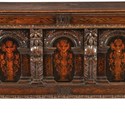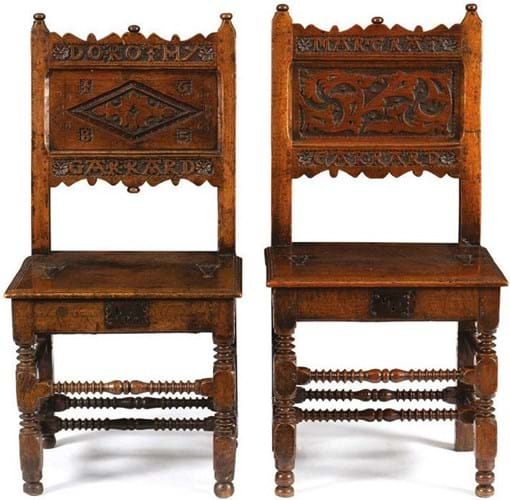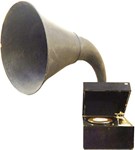Private buyers took most of the early furniture at the May 21 sale and two competing collectors accounted for the 16-times estimate result on what appeared to be a conservatively guided, late-17th century walnut and seaweed marquetry bachelor’s chest catalogued as in the manner of Gerrit Jensen.
Seawood marquetry
Like many English joiners of the period, not a great deal is known about the private life of Jensen, a Flemish-born cabinetmaker who was working in St Martin’s Lane, London, from 1680 until his death c.1705. However, supplying pieces to the royal household, his workshop is the only one during this period known to have used metal inlays and elaborate ‘seaweed’ or ‘arabesque’ marquetry.
The 2ft 8in (82cm) wide chest featured a folding top finely inlaid with a panel of scrolling acanthus with similar inlay to the top and drawer fronts and, against an £800-1200 estimate at the auction on May 21, it sold at £16,000.
By a fellow countryman and near contemporary of Jensen, a mid-17th century Flemish oak coffer, went comfortably, if less spectacularly, over estimate. The 4ft 4in wide x 2ft 8in high (1.32m x 82cm) coffer with a hinged plank top featured to the front three carved niche panels of winged caryatids, separated by carved long-haired caryatids. With panelled sides and fluted block uprights, it was guided at £2000-3000 but sold at £8500.
A 16th century, 4ft 9in (1.44m) high oak aumbrey had some repairs and restoration expected over the centuries but was mainly original and in overall fine condition. Estimated at £2000-3000, it sold to a North Country dealer at £5500.
The same dealer took a pair of 2ft 5in (71cm) tall stained and painted heraldic lions, each carved with a paw resting on a ball. Difficult to date, they were catalogued as Renaissance style and took a lower-estimate £6000.
There were no difficulties in dating two 17th century oak back stools, one of which was carved Dorothy Garrard 1685, the other Margrat Garrard.
Both featured (differently designed) foliate and scroll carved backs, bobbin-turned supports and hinged seats. Pieces of fully named and dated oak are rare and the mention of the ‘Dorothy’ chair in Chinnery’s Oak Furniture: The British Tradition added to the lot’s attractions. Pitched at £6000-10,000, the back stools went to a private buyer on the lower estimate.



















